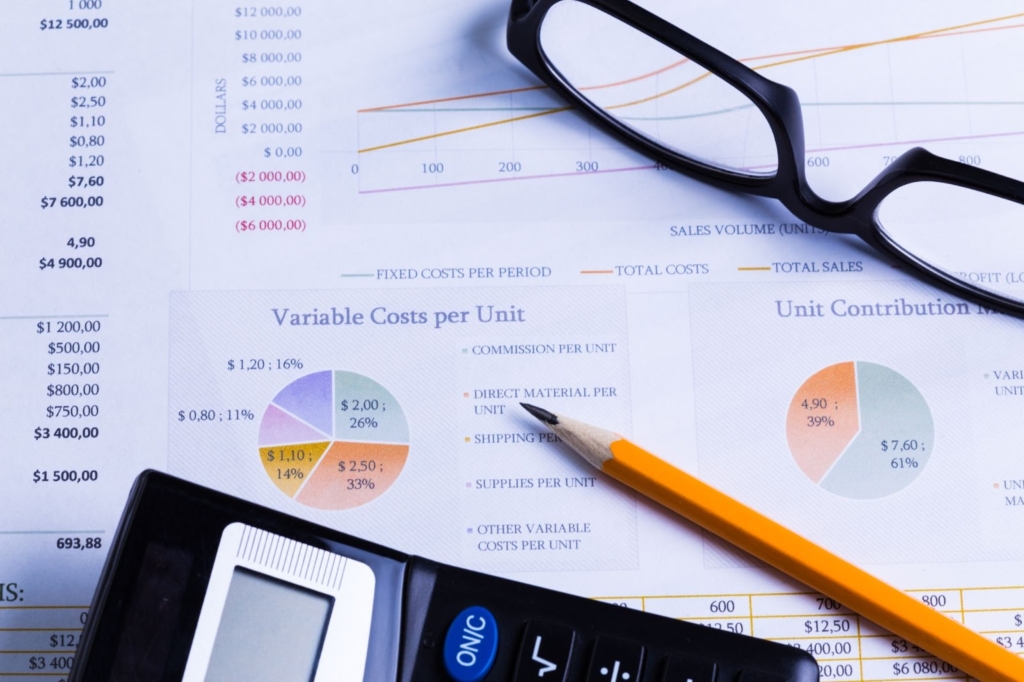
How Estimating Software Can Save Time and Money
In business operations, efficiency and accuracy in cost estimation are vital. Estimating software offers a technology-driven solution that significantly enhances the precision and speed of project cost calculations. This capability is especially crucial for business owners and entrepreneurs striving to maintain competitiveness and profitability. An automated estimation process reduces the potential for human error and frees up valuable time, allowing businesses to focus more on core activities.
What Is Estimating Software?
Estimating software is a specialized tool used by businesses to calculate the projected costs of projects before they begin. This type of software is beneficial in industries like construction, manufacturing, and IT, where accurate cost forecasting is critical for budgeting and planning purposes.
The Core Functions of Estimating Software
An estimating software program provides comprehensive and precise forecasts of project costs, encompassing various financial aspects.
Labor Costs
The software estimates the necessary workforce hours and corresponding pay rates, helping project managers allocate human resources effectively. This functionality is crucial for maintaining labor efficiency and managing payroll expenses within the projected budget constraints.
Material Costs
Estimating software can calculate the quantities and costs of materials required for the project. By accurately assessing these needs, the software aids in preventing both shortages and surplus inventory, which can lead to wasted resources or project delays.
Equipment Costs
This feature estimates the usage or rental costs associated with any machinery or equipment needed for a project. Effective management of equipment expenses can prevent budget overruns and ensure timely project execution.
Overhead Costs
The software also incorporates overhead costs for the general operations needed to support the project. That includes administrative expenses, site security, and logistics, ensuring that all potential costs are accounted for and monitored throughout the project lifecycle. This comprehensive inclusion of overhead helps maintain a clear and complete financial picture, aiding in more accurate budgeting and financial planning.
The Estimating Software Features
Delve into the many features of estimating software, each designed to amplify functionality and maximize user benefits. Explore tools for precise cost calculations, intuitive interfaces for seamless navigation, and robust reporting capabilities for comprehensive project insights.
Automated Calculations
The software automates the aggregation of various cost factors, dramatically reducing the time and effort needed for calculations compared to manual methods. This automation ensures that the estimates are produced faster and free from the errors commonly associated with manual data entry.
Customizable Templates
Users can adapt existing templates or create customized ones that specifically meet the needs of their projects or align with industry requirements. These templates streamline the setup process for new projects, ensuring consistency in how cost data is collected and analyzed across multiple projects.
Integration Capabilities
Estimating software can often be integrated seamlessly with other business systems, such as accounting or project management tools. This integration facilitates a unified workflow, allowing data to flow smoothly between systems, reducing data redundancy, and improving overall accuracy and efficiency in project management.
Real-Time Data
Some estimating software can directly access real-time data from suppliers for materials costs and availability. This feature ensures that the estimates are based on the most current and accurate pricing information available, helping businesses make more informed decisions and maintain budget control during fluctuations in supply costs.

Benefits of Using an Estimating Software
Unlock your business’s potential with estimating software, which redefines project planning and execution. Explore critical advantages, including enhanced accuracy, streamlined workflows, improved decision-making, and heightened efficiency, revolutionizing your approach to construction projects.
Improves Accuracy
One of the primary benefits of using estimating software is the significant improvement in accuracy it brings to project cost calculations. By automating the aggregation of cost data and reducing human error, the software ensures that estimates are precise. This accuracy is crucial for avoiding cost overruns and setting realistic budgets.
Saves Valuable Time
Estimating software streamlines the estimation process by automating complex calculations and data integration. It saves considerable time compared to manual estimation methods, which can be labor-intensive and prone to errors. The saved time can be redirected towards more strategic activities or project management.
Reduces Project Costs
Estimating software helps businesses avoid unnecessary expenditures and identify cost-saving opportunities by providing accurate and detailed cost estimates. It also allows for better resource allocation and helps manage material purchases and labor deployment efficiently, ultimately lowering project costs.
Enhances Project Management
Estimating software integrates seamlessly with other project management tools, providing a comprehensive overview of project finances. This integration allows for continuous budget monitoring and management throughout the project lifecycle, ensuring the project stays financially on track.
Helps Make Better Decisions
With detailed estimates and the ability to quickly update financial forecasts, business leaders can make more informed decisions. Estimating software provides valuable insights into the cost implications of various project scenarios, helping in strategic planning and risk management.
Provides Competitive Advantage
Businesses that use estimating software can respond more quickly to bid opportunities with accurate and competitive pricing. This responsiveness and the ability to provide detailed proposals can give businesses a competitive edge in the marketplace.
Achieves Consistency by Standardization
Estimating software helps standardize the estimating process across projects and departments within an organization. This standardization ensures consistency in how costs are calculated and reported, improving the reliability of financial data and making it easier to compare projects and track performance over time.
Helps Scale Business
As businesses grow, their projects tend to become more complex and numerous. Estimating software can scale to accommodate increased demand without sacrificing performance or accuracy. This scalability is crucial for businesses looking to expand their operations efficiently.
Builds Stronger Client Relationships
Businesses can build trust with their clients by providing transparent and accurate estimates. Estimating software enables the creation of detailed, clear, and professional proposals that can help win clients’ confidence and foster long-term relationships.
Fosters Continuous Improvement
Most estimating software comes with analytics and reporting capabilities that allow businesses to analyze their estimating practices and identify areas for improvement. This continuous feedback loop is essential for refining processes and achieving operational excellence.
Estimating software can significantly enhance a business’s operational capabilities by improving project costing and management efficiency, accuracy, and effectiveness. This technological tool invests in a company’s financial health and competitive positioning.

Uses of Estimating Software in Project Management
Estimating software is used in various project stages to enhance decision-making and financial management. Using estimating software at these critical junctures can significantly improve a project’s likelihood of success by ensuring thorough preparation and ongoing financial oversight. Here are some typical scenarios when evaluating software is particularly valuable:
During the Pre-Planning Phase
Estimating software is most commonly used during a project’s initial stages when accurate cost estimations are crucial for setting budgets and securing funding. It helps determine a project’s financial feasibility before making significant commitments.
When Bidding on Projects
For industries like construction or IT services, where businesses often need to submit bids, estimating software is helpful. It enables the creation of precise and competitive proposals to increase the likelihood of winning contracts.
Throughout the Project Lifecycle
As the project progresses, estimating software is crucial in tracking and managing costs. It helps ensure that the project remains on budget by comparing estimated costs against actual expenditures and allowing for adjustments as needed.
During Project Review and Evaluation
After a project is completed, estimating software can be used to review financial performance and identify areas for improvement. Analyzing how estimates are compared with actual costs can provide insights that help refine the estimation process for future projects.
For Resource Management
Estimating software can also be used to manage resources efficiently. Providing detailed forecasts of labor and materials needed ensures that resources are allocated effectively, preventing excess and shortages.
How to Use the Estimating Software
Mastering estimating software entails a strategic approach to precision in project costing and superior project management. Follow these essential steps to maximize accuracy, optimize cost efficiency, and elevate overall project success by effectively utilizing the software.
Select the Right Software
Choose an estimating software that fits the specific needs of your industry and business size. Consider features like usability, customization options, and the ability to integrate with other systems you currently use, such as accounting and project management tools.
Set Up and Customize
Once you’ve selected your software, the next step is setting it up. It includes installing the software and entering initial data such as labor rates, material costs, and other predefined cost libraries specific to your industry. Customize the templates and cost databases to reflect the types of projects your business commonly handles, ensuring the software is tailored to your particular operational needs.
Input Project Details
Enter the specifics of the project you are estimating. That typically includes the scope of work, project duration, materials needed, labor requirements, and subcontractor costs. The more detailed and accurate the information you input, the more precise your cost estimate will be.
Run Calculations
Use the software to calculate the total estimated costs. The software will consider all the input data and use built-in algorithms to provide a comprehensive estimate that includes all aspects of the project, from materials and labor to overheads and equipment rental.
Review and Adjust Estimates
Once the initial estimate is generated, review it for accuracy. Check for areas where costs could be optimized or if additional costs have been overlooked. Adjust the forecast as needed to accurately reflect the project requirements and budget.
Generate Reports
Most estimating software can generate detailed reports based on the calculated estimates. These reports can be used for internal budget approvals and project planning and as part of client proposal documents. Ensure these reports are clear and professional, as they reflect the thoroughness of your planning process.
Monitor and Update
As the project progresses, the estimating software will monitor actual expenditures against the estimated costs. This monitoring can help manage the budget effectively and make necessary adjustments to the project plan or budget as work progresses. Regular updates may be needed to reflect material cost changes, project scope modifications, or unexpected expenses.
Integrate with Other Systems
To maximize efficiency, integrate your estimating software with other business management tools such as project management software, financial systems, or customer relationship management (CRM) systems. This integration ensures seamless data flow and better coordination between different departments.
After completing each project, evaluate the performance of the estimating process. Identify discrepancies between estimated and actual costs to understand where estimations could be improved. Use these insights to refine your estimating practices and update the software’s data and parameters accordingly.
Explore how you can save time and money on your projects. Visit the Estimate Solutions blog for insightful tips and the latest estimating software advancements.
